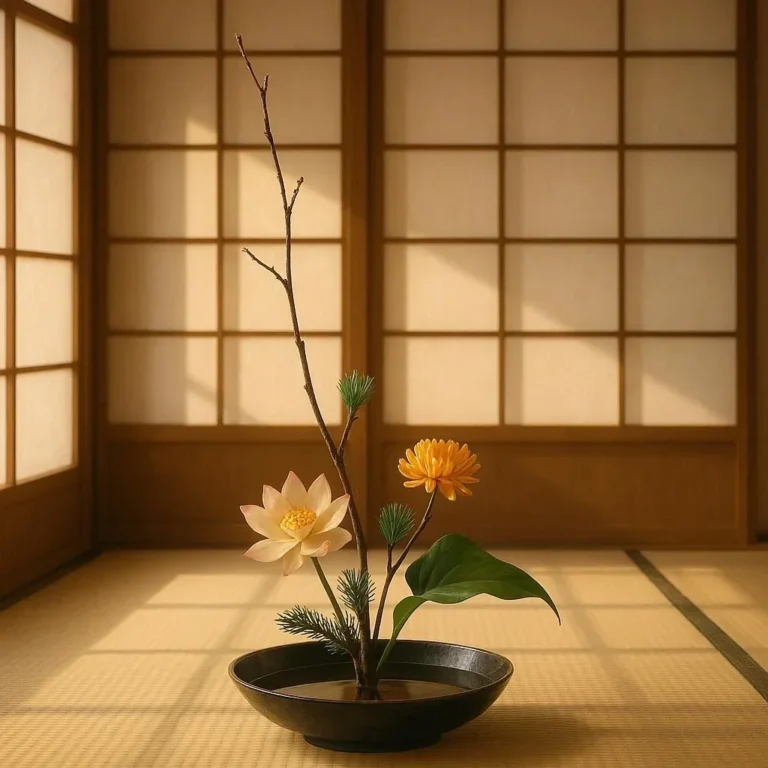506 views Traditional Japanese Dance: From Noh to Kabuki
Exploring the Elegance of Traditional Japanese Dance
Traditional Japanese dance is a mesmerizing blend of grace, storytelling, and cultural heritage. Among the various forms, Noh and Kabuki stand out as iconic representations of Japan’s artistic traditions. This blog delves into the captivating world of Noh and Kabuki dances, exploring their history, techniques, and enduring influence.
What is Noh Dance?
Noh, one of the oldest forms of traditional Japanese theater, combines dance, drama, and music to narrate stories, often inspired by classical Japanese literature. Performed since the 14th century, Noh is known for its slow, deliberate movements and use of masks.
History of Noh Dance
Originating in the Muromachi period (1336–1573), Noh evolved from ancient Shinto rituals and dance forms. It gained popularity under the patronage of the samurai class, becoming a significant cultural art form.
Techniques and Costumes
Noh actors undergo rigorous training to master the precise, stylized movements. Masks, known as hōmen, express various emotions, allowing actors to convey complex narratives without words. Costumes are elaborate, reflecting the character’s status and role.
Noh Plays
Noh plays are typically short, divided into five categories: divine, warrior, woman, madwoman, and demon. These plays often explore themes of love, loss, and the supernatural.
For more details, visit the official Noh Wikipedia page.
What is Kabuki Dance?
Kabuki, a dynamic and expressive dance-drama, emerged in the 17th century, featuring bold movements, vibrant costumes, and dramatic storylines. It is known for its exaggerated expressions and stylized poses, called mie.
History of Kabuki Dance
Kabuki originated during the Edo period (1603–1868) as an entertainment form for the common people. It borrowed elements from Noh, developing into a distinct style emphasizing drama and spectacle.
Techniques and Costumes
Kabuki actors, often male (onnagata for female roles), use exaggerated gestures and facial expressions. Costumes are colorful and intricate, enhancing the performance’s visual impact.
Kabuki Plays
Kabuki plays often revolve around historical events, love stories, and moral dilemmas. The stylized movements and dynamic acting bring these tales to life, captivating audiences.
To learn more, visit the Kabuki Web page.
Cultural Significance of Traditional Japanese Dance
Both Noh and Kabuki are integral to Japan’s cultural identity, preserving history and storytelling traditions. They continue to inspire modern performances and adaptations, ensuring their relevance in contemporary times.
Comparing Noh and Kabuki Dance
While both forms share cultural roots and storytelling purposes, distinct differences set them apart:
- Tempo and Style: Noh is slow and meditative, whereas Kabuki is dynamic and energetic.
- Costume Design: Noh uses simpler, subdued costumes; Kabuki features vibrant, elaborate designs.
- Audience Engagement: Noh appeals to a more niche, sophisticated audience; Kabuki is more accessible and entertaining for broader audiences.
Modern Relevance of Traditional Japanese Dance
Despite their historical origins, Noh and Kabuki continue to evolve, influencing modern theater and dance globally. They exemplify the enduring appeal of traditional arts in contemporary culture.
Conclusion
Traditional Japanese dance, particularly Noh and Kabuki, offers a profound insight into Japan’s rich cultural tapestry. Their artistic beauty and historical depth make them timeless, continuing to captivate audiences worldwide.
If you’re interested in exploring further, consider attending a live performance or delving into recommended readings.
Frequently Asked Questions (FAQs)
Q: What makes Noh and Kabuki different?
A: Noh is known for its slow, masked performances with spiritual themes, whereas Kabuki is more dynamic with exaggerated expressions and vibrant costumes.
Q: Where can I watch Noh or Kabuki performances?
A: Performances are held in traditional theaters in Japan and internationally. Check schedules on official websites like the Nohgaku Promotion Association.
Q: How long do Noh and Kabuki performances typically last?
A: Noh plays are usually short, around 30-60 minutes, while Kabuki plays can last several hours, including intermissions.
Q: Are there opportunities to learn Noh or Kabuki dancing?
A: Yes, workshops and classes are available, both in Japan and globally, for those interested in mastering these traditional dance forms.
Q: What role do masks play in Noh performances?
A: Masks in Noh are essential for expressing emotions and portray characters, allowing actors to convey narratives effectively without dialogue.
References
For deeper exploration, visit:







